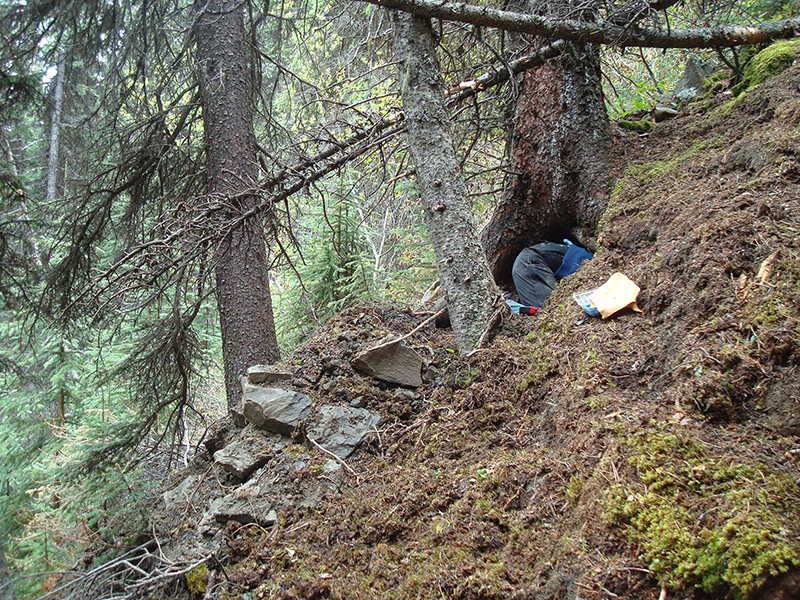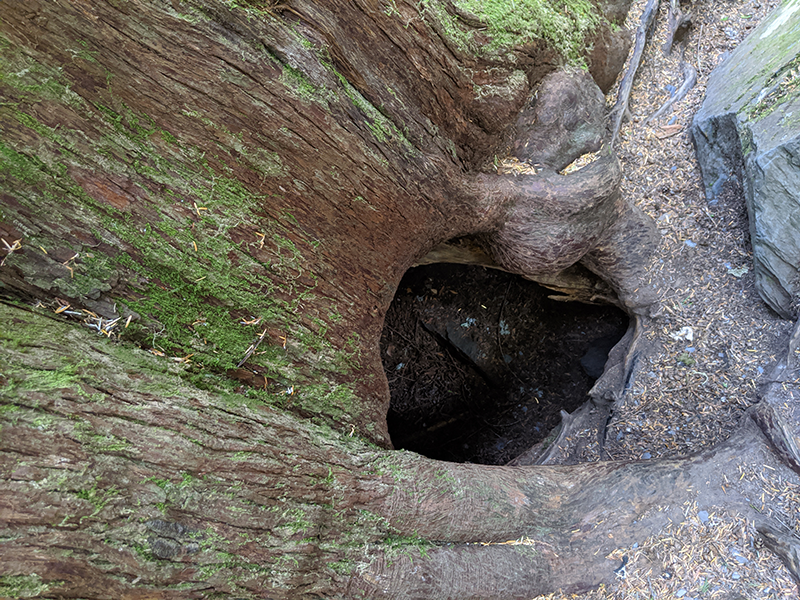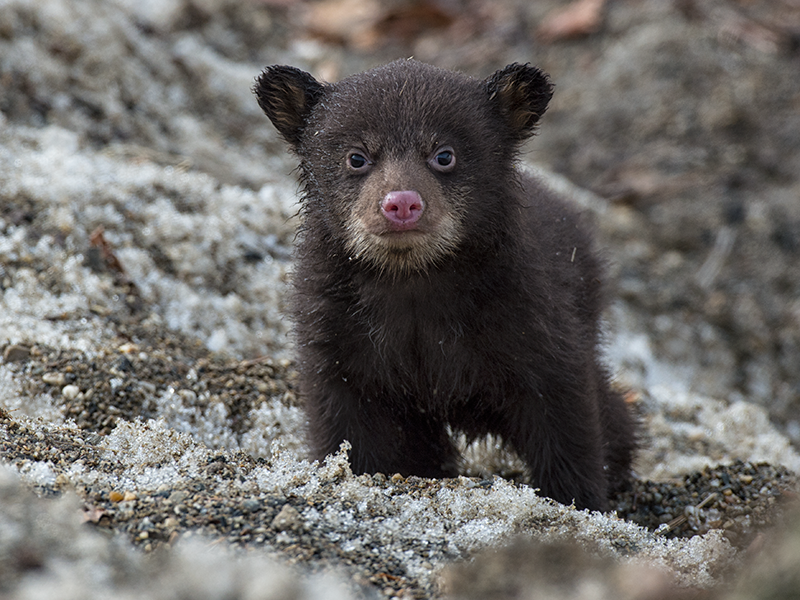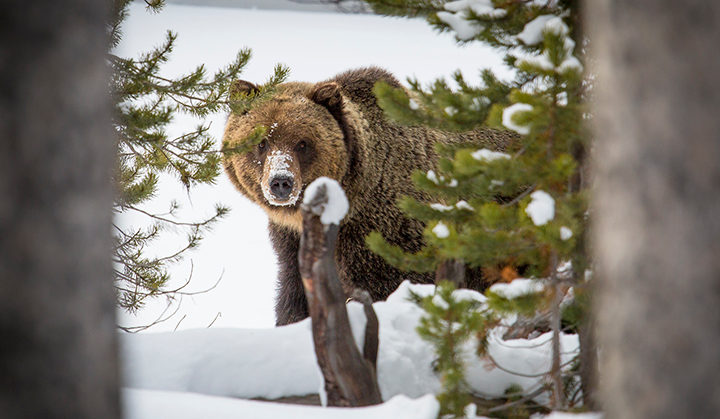Exploring bears’ big gains getting them through winter and their need for connected, protected habitats year-round
As many landscapes across the Yellowstone to Yukon region get colder and welcome a blanket of snow, the animals that live here have also been preparing for the change in seasons.
With cooler temperatures nearing, wrapping up to “hibernate” in a big, soft blanket with a belly full of hot cocoa seems like an ideal way to cope. And of course, this thought brings a certain species to mind. You guessed it — we’re talking about bears!
Bears’ presence in wild places from Yellowstone to Yukon is an important part of what makes this region special. No matter the season, we are reminded to do our part to share space with them as they move, mate and search for food.
As we transition from fall to winter, we must not forget these amazing animals, but learn more about their cold-weather ways. This knowledge can help us better understand bears’ need for intact habitat and space away from people.
We learned a bit more about hibernation from bear expert, Dr. Karine Pigeon, former UNBC-Y2Y post-doctoral fellow and landscape ecologist invested in human-wildlife coexistence worldwide. Read on for the fascinating world of hyperphagia, denning, bear cubs and connectivity.

Preparing for a long rest-and-digest
The bottom line: bears need to eat like crazy to gain weight for the big winter slow-down. From late July to October, their metabolism kicks up several notches, driving the bear’s appetite into hyperdrive. This process is called hyperphagia, where a bear’s body converts calories into fat. During this stage, bears also drink several gallons of water per day to digest the large amounts of food they take in.
The bottom line: bears need to eat like crazy to gain weight for the big winter slow-down.
Throughout the Rockies, grizzlies eat lots of berries (soopolallie, huckleberry, blueberry, bearberry, lingonberry); roots (sweet vetch, glacier lily bulbs); insects, if they can find enough (fat-filled ant and wasp larvae, and army cutworm moths); carcasses killed by other predators; and if the bear is lucky, a bull elk or even a bull moose. Especially in the southern parts of the Yellowstone to Yukon region, grizzly bears look for high-energy nuts from whitebark pine trees.
Digging into bear denning
The timing of when a bear decides to enter its den doesn’t primarily depend on weather patterns; rather, it depends on the availability of food in a given region. Most bears in the Yellowstone to Yukon region will enter dens over the winter because they do not have access to nutrient-dense foods such as salmon year-round, like their coastal relatives do. Those bears that can get extra-fat may not even go into “full” hibernation, but do stay mostly inactive.
According to Dr. Pigeon, bears usually dig their dens just hours before entering. In general, they prefer using steeper slopes – even a creek bank – simply because the angle allows for easier digging. Drier areas with good drainage (who wants wet fur while sleeping?), conifer forests, and subalpine forests with thickets of bushes make ideal locations for dens.
In the inland temperate rainforest of the Upper Columbia region, bears will even use the base of old growth trees to den!

The happenings of hibernation
Some scientists say that bears are not true hibernators because they don’t enter the coma-like state called ‘topor.’
“What happens when bears hibernate is a drastic drop in metabolism to preserve the energy saved up over the summer and fall,” says Pigeon. “The bigger the animal, the easier it is for them to stay warm; that’s why smaller animals like squirrels go into topor and bears don’t need to.”
Equally as bewildering, bears don’t pee, poop or eat during hibernation! Can you imagine going five months or more without going about your daily routine? Luckily, bears are able to recycle their urine while they hibernate. Some experts say this seemingly magical process could help learn more about human health, too.

Hibernation is also a special (and energy-sucking) time for female bears. After mating season, sows enter the den “pregnant” through delayed implantation – where the fertilized egg doesn’t implant in the uterine wall until November. However, if the female bear doesn’t pack on enough weight in the fall, her body will reabsorb the fertilized egg.
If hibernation wasn’t already bad-ass enough, bears give birth while half asleep, usually around January, and feed their tiny cubs until they are big and strong enough to emerge together come spring.
Connecting and protecting habitat helps hibernation
Incredibly, bears can survive in all kinds of habitats. However, bear populations can’t survive high mortality rates because females don’t reproduce often or quickly. Grizzlies generally won’t have babies until they are at least four, and often need to be even older. They also only reproduce every three years or so thereafter.
Bears and people are drawn to similar landscapes throughout the Rockies and otherwise. Too often, this means encounters with humans that result in the bear being relocated or killed. Losing one female bear in an area makes a huge difference in how well that population can thrive.
This means our efforts to coexist with bears during all seasons help give them the space and safe habitat to reproduce and rest over the winter. Connected and protected landscapes is an absolute necessity in this process.
Our enthusiasm for bears is evergreen. It is our hope that the more people learn about these incredible animals, the more we can all do what we can to make their life in the wild just a bit easier.
So, as you, too, prepare for the forthcoming winter months, keep our bear friends in mind and know that by supporting Y2Y, you are helping keep bears and other species safe and healthy.


